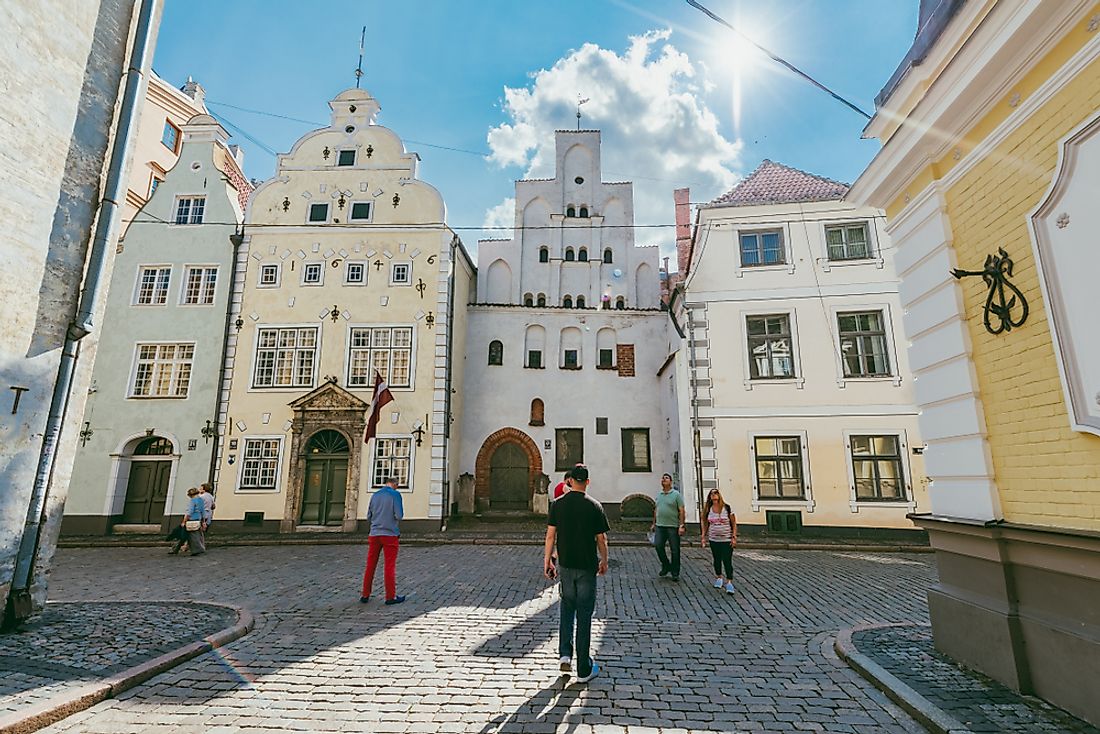What Is The Ethnic Composition Of Latvia?

Latvia is a country in the Baltic region of Europe between Estonia and Lithuania. It has a population of around 1.9 million. The ethnic composition of Latvia mostly comprises of Latvians, Russians, Belarusians, Ukrainians, Poles, and other Europeans.
The Ethnic Composition of Latvia
The main ethnic group in Latvia are the Latvians who constitute 62.1% of the population of Latvia. The other groups are considered minority groups as they are less than half of the country’s population. Russians, Ukrainians, Belarusians, and Poles are the largest minority ethnic groups in Latvia.
Latvians
Latvians are the natives of Latvia who share common Latvian language, history, and culture. They form the major ethnic group in Latvia with a population of over one million. The name “Latvians” was founded by Finnish speakers who lived in Latvia many years ago. They called the Latvians “Latvis” which meant the “forest clearers.” German settlers in Latvia later referred to the Latvians as the “Letts” which is rarely used today. The culture of the Latvians has been influenced by that of the Germans, Russians, and Scandinavians. The national language of Latvia is Latvian which is a linguistic branch of the Indo-European languages.
Russians
25.6% of the total population in Latvia comprises of Russians. Most of these Russians inhabit South-Eastern Latvia resulting in a widespread Russian influence in these parts of the country. In fact, over the years, Russians have become the largest ethnic minority in Latvia. Some of the notable Russians from Latvia include Aleksandr Kaleri (cosmonaut), Alexander Shabalov (chess player), Ksenia Solo (actress), and Mikhail Zadornov (satirist).
Belarusians
The Belarusians in Latvia amount to 3.4% of the country’s population. Consequently, they are the 3rd largest ethnic group in Latvia. Most Belarusians live in the country’s border towns such as Riga which has a Belarusian school. Many Belarusians migrated into Latvia following the Soviet occupation. Examples of Belarusians in Latvia are Yanka Maur (writer), Kastus Jezavitau (politician and minister), and Viktar Valtar (poet and writer).
Other Ethnic Groups
The 4th largest ethnic group in Latvia are the Ukrainians who are about 2.3% of the country’s total population. Besides Ukrainians, there are historical minorities that also inhabit Latvia including Poles, Lithuanians, and Jews. The Poles began settling in Latvia in the 16th century when the Polish government came to the rescue of Latvia to fight off the Russian invasion threats. Polish farm workers migrated into Latvia in the 1930s. On the other hand, the Lithuanians live in areas close to the Latvian-Lithuanian border such as Liepaja and Jelgava. The highest number of Jews live in Riga, approximately 11,000. Other smaller communities of Jews live in towns such as Liepāja, Jelgava, Daugavpils, and Jēkabpils. Although some of the jews in Latvia were born of the few Holocaust survivors, most Jews existing in the nation today descended from those who migrated from some parts of the Soviet Union. Smaller ethnic groups that are included in the ethnic composition of Latvia are Moldovans, Azeris, Chuvash, Livs, and Georgians. However, most of the Livs in Latvia have been assimilated into other Latvian ethnic groups. Only a few of them presently know their native language.
What Is The Ethnic Composition Of Latvia?
| Rank | Ethnic group | Percentage of total population |
|---|---|---|
| 1 | Latvian | 62.2% |
| 2 | Russian | 25.2% |
| 3 | Belarusian | 3.2% |
| 4 | Ukrainian | 2.2% |
| 5 | Polish | 2.1% |
| 6 | Lithuanian | 1.2% |
| 7 | other | 1.5% |
| 8 | unspecified | 2.3% |











